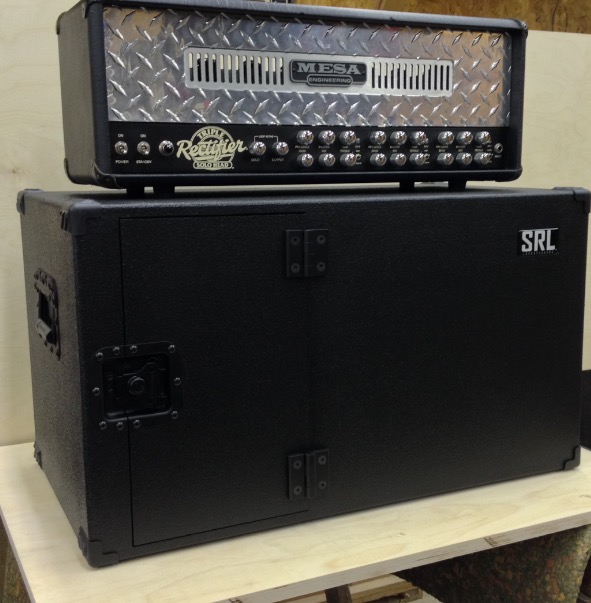
Guitar Isolation Cabinet
SRL Loudspeakers
Project Category:
Guitar and Bass Speakers
Project Level:
Intermediate
Project Time:
8-20 Hours
Project Cost:
$100 – $500
Project Description:
The project entailed building a stand-alone guitar isolation cabinet for a professional touring musician who utilizes a Mesa Triple Rectifier
Design Goals:
Build a solid enclosure with very good internal acoustic air space as well as high sound absorption to prevent stage bleed.
Driver Selection:
Part # 290-4801
Enclosure Assembly:
5/8″ Baltic Birch plywood. Entire enclosure is held together with beach-wood biscuits,staples, and glue. This method while taking longer actually ensures a stronger bond and zero chance of vibration and resonant frequencies from fasteners coming loose.
The only fasteners that were used were 10-32 T-Nuts and grade 8 SHCS’s to hold the driver in place. Truss head screws were used to mount the Penn-Elcom handles and jack dish into place with foam gasket around the flanges.
The inside of both chambers of the isolation box contain Owens Corning 1″ 703 wrapped in black burlap fabric. This was aesthetically pleasing, but also prevented sound transfer between the inside cavity of the box and the outside.
Conclusion:
While this project was very time consuming, it yielded a product far superior than any big name guitar speaker that could be purchased. We utilized the finest materials, construction methods, and Eminence Drivers for a high quality product. This design is very unique in that no one has developed a horizontal platform isolation cabinet with integrated speaker and microphone chamber. Most isolation cabinets are vertical and look goofy with an amp head hanging off both sides. The other beautiful detail about this project was the driver we selected: Eminence EM12. This driver had a 200W RMS rating on it which fell in line with the output power of the Mesa head. This allowed Seth to push his amplifier gain to max and get the tube sound he was after without destroying the speaker or getting kicked off stage.
About the Designer:
SRL Loudspeakers (founded 2017)
We were founded on guitar iso-cabinets and quickly moved into designing and building sound reinforcement cabinets for DJ’s and mobile musicians. While lead times aren’t our selling point, our quality and tonal characteristics speak for themselves.
Project Parts List:
|
Part # |
Description |
Qty |
|
290-4801 |
Eminence Legend EM-12 12″ Guitar Speaker 200W 8 Ohm |
1 |
|
248-324 |
Sennheiser e906 Supercardioid Dynamic Mic |
1 |
|
260-701 |
Penn-Elcom H7154K Spring Flex Cabinet Handle Black |
1 |
|
262-268 |
Penn-Elcom EX-6301B 19″ Lockable Vented Laptop Drawer 1RU |
1 |
|
092-075 |
Neutrik NA3MDF XLR “D” Series 3-Pin Male to Female Adapter |
1 |
|
092-084 |
Neutrik NJ3FP6C-BAG 1/4″ Locking Chassis Jack Black |
1 |
|
092-052 |
Neutrik NL4MP Speakon Connector 4 Pole Panel Mount |
1 |
|
262-834 |
Plastic Stacking Speaker Cabinet and Case Corner 16 Pcs. |
1 |
|
260-101 |
Acry-Tech DuraTex Black 1 Gallon Roller Grade Speaker Cabinet Coating |
1 |

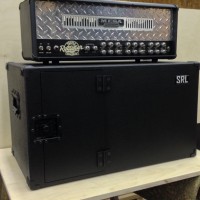
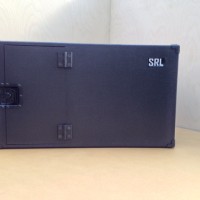
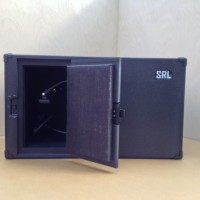
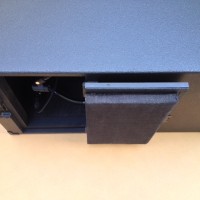
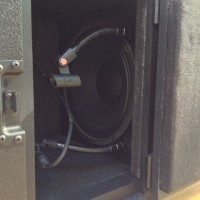
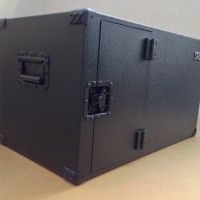
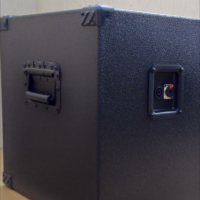
Daaaang!
Would love to seen this as a bass cab for a 200W RMS head (Ampeg, Mesa, Trace, etc.). When I play bass on stage our sound guy always prefers me to jack-in to a DI box and plugs that into the PA. While I understand this gives him much more control of our overall sound, also means my amp stays home (along with it’s unique characteristics heard/recorded when we’re in a “big room” studio setting).
Not sure how you’d mic a bass driver (i.e.: Eminence Legend BP102) in a sealed cab but it would sure be interesting!
Nice work guys!
see comment below.
RS– As a bass player myself, I would never let a sound guy tell me to use a DI an leave my rig at home. I have to have my stage sound. Any how, I have zero clue how you would effectively build a bass guitar iso cab. Due to bass frequencies having such long wavelengths, I am not sure you could build a box that wasn’t the size of an RV to get the sound correct. I would consider maybe a small cabinet for your stage sound. We build custom cabinets and right now I am working on a compact 12″ cab for a relative.
As for how to mic a bass cab…..that is tricky and there are many different schools of though on this. Different frequencies radiate from different areas of the cone, especially on larger speakers. Add a horn into the mix and now you really have complicated things. From our experience with the isolation cabinet we built, we leave the microphone as far from the speaker as possible and effectively pick up the entire spectrum of the speaker.
Thank you for the kind words. If you have any questions lambert.christ@outlook.com
I would love the opportunity to duplicate this build. Do you have dimensions and other specifics you’re willing to share. My son is a guitarist and I would love to put this together for him for Xmas.